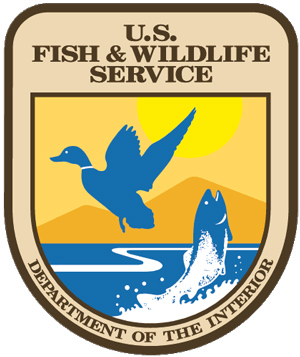
Photo by USFWS@USFWSNews
December 18, 2020 - WASHINGTON – On Thursday, the U.S. Fish and Wildlife Service (Service) finalized new regulations regarding critical habitat designations under the Endangered Species Act  that provide greater legal certainty in response to the unanimous 2018 Supreme Court decision (Weyerhauser) to create an orderly and transparent public process for the public to understand the requirements of section 4(b)(2) and promote better conservation for endangered and threatened species through stronger collaboration with private landowners and other partners.
that provide greater legal certainty in response to the unanimous 2018 Supreme Court decision (Weyerhauser) to create an orderly and transparent public process for the public to understand the requirements of section 4(b)(2) and promote better conservation for endangered and threatened species through stronger collaboration with private landowners and other partners.
“After a transparent public input process involving stakeholders and other interested parties, the Service is pleased to finalize these regulations, which align with the Trump Administration and Interior Secretary Bernhardt’s priorities,” said Service Director Aurelia Skipwith. “In addition to improving consistency and predictability for stakeholders, these regulations will stimulate more effective conservation on the ground.”
This final rule supports the conservation of imperiled species, which has been a hallmark of the Trump Administration, as no administration in history has recovered more endangered and threatened species in their first term. Since 2017, 14 species have been determined to not be either a threatened species or endangered species under the ESA’s List of Endangered and Threatened Wildlife, and another seven species have been downlisted from endangered species to threatened species. To provide context for this in looking at other administrations in their first term, the Obama Administration recovered six species; the Bush Administration recovered eight species, and the Clinton Administration recovered nine species.
This rulemaking action demonstrates the Secretary of the Interior’s responsiveness to public concerns about the impacts of critical habitat designation by committing to always undertake an analysis when a proponent of an exclusion presents credible information supporting their case. The types of impacts that the Secretary will consider include requests from Tribes regarding the management of their lands; requests from States or local governments when proposed critical habitat may impact schools, hospitals or other important community facilities; the potential that critical habitat designation may increase catastrophic wildlife or invasive species to the detriment of the ESA listed species; and whether areas should be excluded because there are already species conservation measures being implemented to recover the species.
Section 4(b)(2) of the ESA gives the Secretary the authority to exclude any particular area from a critical habitat designation if the benefits of exclusion outweigh the benefits of inclusion for that area, so long as excluding the habitat will not result in the species’ extinction.
The rule provides the framework for how the Service will take into consideration the economic impact, impact on national security and other relevant impacts of designating critical habitat. Additionally, the regulations provide categories of “other relevant impacts” that the Service may consider, including public health and safety, community interests, and the environment, such as the increased risk of wildfire or pest and invasive species management.
The rule does not affect how the Service administers the ESA within areas that currently are designated as critical habitat, which are areas identified as essential to a species’ conservation and recovery and containing one or more physical or biological features. The ESA’s language makes clear that the conservation needs of the species drive the initial step of identifying critical habitat and expressly requires proposed designations to be made based on the best scientific data available.
The final regulations can be found in the Federal Register Reading Room at: https://public-inspection.federalregister.gov/2020-28033.pdf
Additional Background on ESA Improvements and Accomplishments Under the Trump Administration.
Fish and wildlife conservation depends on federal partnerships with states, landowners, and most importantly sportsmen who directly fund – to the tune of $1 billion last year alone and more than $23 billion since inception – conservation efforts by purchasing hunting and fishing licenses, fishing tackle, ammunition, boating fuel and other recreational items.
To support stronger on-the-ground conservation efforts, encourage private actions to benefit our most imperiled species and provide greater legal certainty for ESA determinations, the Service updated its ESA regulations in 2019 to improve the implementation of the law. The regulations hadn’t been updated since the ESA passed some forty years ago. However, those changes did not modify the five statutory factors that are considered for each listing determination.
Source: USFWS








